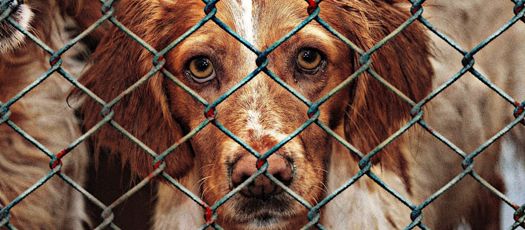
How similar are dogs and their owners?
People often assume that dogs and their owners look alike. And it’s true – studies have shown that many people seek out a dog that looks like them. Christina Payne and Klaus Jaffe photographed 48 pedigree dogs and their owners. The pictures were then shuffled and shown to study participants who were asked to sort them into the correct pairs. The participants ended up identifying the correct human-dog matches with greater than random accuracy. The results of this study, which was performed in Venezuela, have been validated by further studies conducted in the United States and Japan. This outward similarity was only found in photos of pedigree dogs, however. When study participants are shown pictures of mutts and their owners, it is no longer possible to match them up correctly.
Similarity – and not just in looks
Comparable mechanisms also come into play when looking for human social partners. But there, we are guided not just by physical appeal, but also by psychological characteristics. Similarity in terms of personality also seems to play a role, ensuring greater satisfaction within the relationship (Karney & Bradbury, 1995). Since dogs are typically viewed as close companions, friends, or family members, the same cultural and psychological factors can influence a person’s choice of canine companion. People may choose a certain dog or breed because they find various behavioral aspects particularly appealing and/or think there are certain similarities between them and the dog. Every person has his or her own preferences, of course.
There are several possible reasons that a dog owner’s personality may affect the dog’s personality. First, the close social bond between owner and dog might cause skewed perceptions on the owner’s part. This means an owner might ascribe certain behaviors to their furry friend that are similar to the owner, but without the dog actually displaying these characteristics. This seems unlikely, however, since the personality questionnaires used yield similar results for self-assessments and assessments by others (Turcsán et al. 2012).
Another possible reason is that the activities shared between the dog and owner influence the dog’s personality – especially if the dog has lived with the owner from puppyhood. It is likely that a dog belonging to a more extroverted owner is taken along to social events more often, receiving more socialization around unfamiliar people and dogs alike. Of course, it could also be the other way around, with the dog’s personality influencing the owner instead. For example, it is possible for an active, energetic dog to prompt its two-legged companion to be more active.
It would also be possible for the characteristics of a dog and its owner to become more aligned over time. In that case, dogs who live with their owners for longer periods would be more similar to them than dogs who live with their owners for a short time. The studies performed so far show, however, that this is not the case, as the length of time that a dog and its owner live together is not the crucial factor in terms of the similarities in personality structure between them. So it isn’t the case that a dog and its owner become more similar over time. However, dogs who live on their own with their owners are more similar in personality structure to their owners than dogs who live with other dogs in the same household (Turcsán et al., 2012).
A fourth possibility would be that the owner seeks out a canine companion that fits his or her personality and lifestyle right from the start. That’s just what people do with our partners and friends, after all.
This kind of selection could take place at both the individual and breed level. Different people find different character traits attractive, of course. For example, owners who perceive a dog as a close social partner are more likely to seek a furry friend that is very affectionate. By contrast, a person who is highly interested in his or her own autonomy would be more likely to choose an independent companion. A very active person is also more likely to look for a dog that fits an active lifestyle, while a calm person would probably choose a relaxed dog. Accordingly, the choice of breed or individual dog could reflect the owner’s personality, whether consciously or unconsciously.
In fact, various studies have shown similarities in personality structure between people and their dogs. For example, owners who are emotionally unstable rate their dogs as being more nervous and uncertain, while extroverts tend to describe their canine companions as energetic, enthusiastic, and socially open (Turcsán et al., 2012). More amiable people view their dogs as not very aggressive, and conscientious people perceive theirs as being more amenable to training (Chopik et al. 2019). Owners of dogs with anxiety issues (such as anxious aggression or separation anxiety) frequently describe themselves as not very self-confident (Dodman 2003), and people with an aggressive canine companion state that they tend to be very tense themselves (Podberscek & Serpell 1997). Beyond that, people with low scores for tolerance as a personality category also tend to choose breeds perceived as aggressive (Egan & MacKenzie 2012). Another study also finds a similar connection: Owners of dog breeds that more frequently cause injuries (in this survey, Akitas, Dobermans, Rottweilers, Chow Chows, Pitbulls, and wolf mixes) are more likely to display antisocial behavior and have lower risk aversion than people in comparison groups (Ragatz et al. 2009).
Be careful when interpreting the data!
Caution is needed when interpreting the data, however, as is always the case with study results like these. Correlation does not necessarily imply causation. That means it is not apparent from these connections which aspect represents the cause and which the effect. It may not be the case, for example, that dogs become more aggressive because their people are tense. Instead, owners may be increasingly tense because their dogs regularly display aggressive behavior. It should also be stressed that the assessments of these behaviors are based exclusively on statements by the owners. This may affect the results to a certain degree. However, owners do seem able to assess their dogs’ personalities quite well in general, as their evaluations tend to match up with those of other people. That means owners are not simply projecting these behaviors onto their dogs.
Whatever the cause may be, it is apparent that there certainly is something to the old saying “like master, like dog” – and not just in terms of appearance, but also in personality structure.


